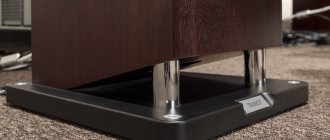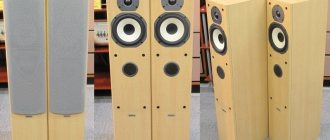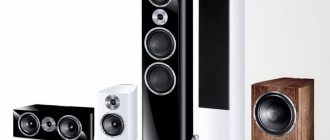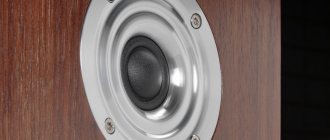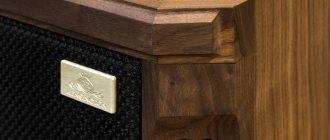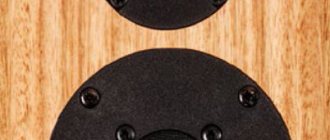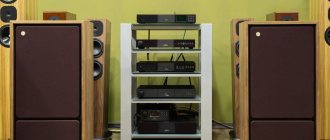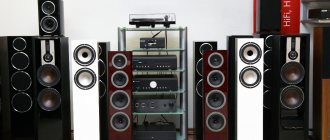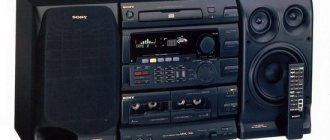Even at the level of associations, it is difficult to name a brand more “acoustic” than Tannoy. The stable English expression “Over the Tannoy” took hold during the Second World War on military bases of the British Commonwealth. In the Russian-language press, for some reason, this phrase was sometimes translated as “in Tannaian style” - they say, it was done in a military, professional manner. But in fact, we were talking about Public Address, i.e. “via loud-speaking warning systems” - all equipped with Tannoy equipment, which has become a household name, like “revolver” or “copier”.
In general, the roots of the common noun Tannoy have an indirect relation to acoustics, to put it mildly, but for this we need to go back even earlier - to the very beginning of the history of the Tulsemere Manufacturing Company, in 1926. Founder Guy R. Fountain has turned his garage in Dulwich, south London, into a profitable business. At that time, radios used direct current for their lamps, which had to be recharged. The standard device was expensive and not very safe due to the likelihood of mercury vapor leakage, and Fontaine proposed his own version of the rectifier, the design of which used two metals - tantalum (tantalum) and lead alloy (lead alloy).
Company founder Guy Fontaine at work
As subsequent history showed, this name brought good luck not only to rechargers. A few years later, Tannoy received its first order for the installation of a sound reinforcement system at the European Circus. This served as a launching pad for the brand, and in 1933, Fontaine released the first two-way speaker system. A year later, the company already had a full range of microphones, loudspeakers and amplifiers in its arsenal. At the outbreak of World War II in 1939, the Tannoy company was focused on the national defense program and produced components that operated in the communications systems of airfields, submarines, and others.
The first driver made using Dual Concentric technology was presented at the London Radio Show in 1947. The photo shows the Tannoy stand at this exhibition
Three years after the end of the war, Tannoy introduced its first Dual Concentric speaker on the popular London Radio Show, laying the foundation for its success. The position of the brand's chief engineer at that time was occupied by Ronnie H. Rackham, who combined a horn-based compression HF driver with a 15-inch bass driver into, in fact, a point source of sound. This unique design was later implemented in virtually all lines of branded speaker systems - both professional and home. Since then, the design has been constantly updated and developed, but features of that first original concept are present even in the company's newest loudspeakers.
Tannoys are located all over the world from the Sydney Opera House to the Red Hot Chili Peppers studio
In the 80s, like many audio brands, Tannoy experienced a period of management transformation. First, in 1987, a merger with Goodmans Loudspeakers into the TGI plc group, then in 1989, an alliance with the audio equipment manufacturer Audix, and finally, joining the TC Group holding, together with MartinAudio, Lab.Gruppen, TC Electronic, TC Helicon, TC Works and GLL. Tannoy components are found all over the world, from the Sydney Opera House to the Red Hot Chili Peppers' studio. In this material we will talk about the updated legendary Revolution XT series of acoustics.
Heroes of the Revolution
Revolution XT is the first Tannoy loudspeaker line to use the new Dual Concentric driver with Omnimagnet magnet system and Torus Ogive waveguide. The high-frequency emitter and mid/low-frequency driver have a single magnetic system, and a donut-shaped tweeter membrane and an Ogive phasing core (phase-equalizing bullet) are integrated into the waveguide.
Floor-standing speakers Tannoy Revolution XT 6F
The Revolution XT Series includes the compact XT Mini bookshelf speaker, the rack-mountable XT 6 bookshelf speaker, and the XT 6F and XT 8F floorstanding speakers (with six- and eight-inch drivers, respectively). There is also an XTC center channel speaker, designed for those who, based on this line, are going to create a multi-channel home theater system.
Floor-standing speakers Tannoy Revolution XT 8F
The biggest change from the previous version was the move from a rear-mounted bass reflex port design to a bottom-mounted port design. In practical terms, this means that the XT Series is much easier to position in your listening room without experiencing any problems with bass reproduction. In addition, thanks to the presence of chrome-plated legs and a built-in stand, the models of the new series are able to add some aesthetic charm to the design of the room.
Bookshelf speakers Tannoy Revolution XT 6
The tasteful new speakers look great without being as understated as previous models. All speakers represent a simple load for the amplifier. To make them sing, a minimum power of 25 watts is recommended.
Tannoy continues Revolution
If you ask a randomly selected audiophile which brand he considers the most “acoustic”, in 50% of cases he will answer Tannoy. The popularity of this brand is also proven by its household name, which is manifested in the stable English expression “Over the Tannoy”, which was established during the Second World War in the territories of the British Commonwealth. In Russian, this expression also takes place - “in Tannaian”. This expression is used when you want to note that something was done in a military professional manner. This brand has earned such wild popularity for its equipment used in “loud-speaking warning systems.” The history of the brand began in 1926, with the light hand of Guy Fontaine. Under his leadership, over 15 years, the Tulsemere Manufacturing Company grew from a garage workshop to an enterprise that provided acoustic systems to the British army, in particular microphones, loudspeakers and amplifiers, which were used as elements of public address systems at military bases, airfields, and submarines. For their reliability and efficiency, the products of this brand have received their household name.
Three years after the end of the war, Tannoy introduced its first dual concentric speaker, the Dual Concentric. It was this product that provided the foundation for future success and world fame. Tannoy's chief engineer of the era, Ronnie Rackham, created a unique design based on combining a horn-mounted HF compression driver with a 15-inch bass driver, creating a point source of sound. This innovative design began to be used in all branded speaker systems, both professional and home. Since then it has been continuously developed and improved, but features of the original design are recognizable even in the company's current products (loudspeakers, etc.), which speaks volumes about the quality and significance of this development.
In the 80s, like many audio brands, Tannoy experienced a period of management transformation. First, in 1987, a merger with Goodmans Loudspeakers into the TGI plc group, then in 1989, an alliance with the audio equipment manufacturer Audix, and finally, joining the TC Group holding, together with MartinAudio, Lab.Gruppen, TC Electronic, TC Helicon, TC Works and GLL. Tannoy components are found all over the world, from the Sydney Opera House to the Red Hot Chili Peppers' studio. In this article we will talk about the updated legendary Revolution XT series of acoustics.
Heroes of the Revolution
The Revolution XT is Tannoy's first line of loudspeakers to utilize the Dual Concentric driver with Omnimagnet and Torus Ogive waveguide. The high-frequency emitter and mid/low-frequency driver have a single magnetic system, and a donut-shaped tweeter membrane and an Ogive phasing core (phase-equalizing bullet) are integrated into the waveguide. The Revolution XT Series includes the compact XT Mini bookshelf speaker, the XT 6 stand-mountable bookshelf speaker, and the XT 6F and XT 8F floorstanding speakers. There is also an XTC center channel speaker, which is used by those wishing to create a multi-channel home theater system based on this line.
The biggest change from the previous version was the move from a rear-mounted bass reflex port design to a bottom-mounted port design. In practical terms, this means that the XT Series is much easier to position in your listening room without experiencing any problems with bass reproduction. To make them sing, a minimum power of 25 watts is recommended.
Tannoy Revolution XT 8F
The flagship position in the new line is occupied by the Revolution XT 8F, which combines all the classic advantages of the Tannoy brand, which is expressed in both dynamics and musical articulation, with extremely smooth sound and high-quality stereo image, which are provided by the new Dual Concentric driver. Such a set of high-quality elements, paired with a weighty body of 108 centimeters in height and a volume of 50 liters, creates a field of possibilities that a small room simply cannot fully reveal, which makes this product an excellent option for large rooms.
Tannoy Revolution XT 6F
The Tannoy Revolution XT 6F floorstanding speakers are almost perfectly balanced, thanks to a second 15cm low-frequency driver, providing a strong base for the sound despite the speaker's small cabinet size. Not to mention, the Tannoy cases are machined and feature attention to detail, which is evident in the absence of sharp corners or visible fastening parts. Grill magnets hidden inside the front panel are so powerful that they allow you to keep the grills in a strictly established position. The latter are finished with acoustically transparent material and have a plastic frame. At the same time, we owe the Torus waveguide the efficiency with which it dissipates the sound wave, both in the vertical and horizontal planes.
Tannoy Revolution XT 6
The compact speaker Tannoy Revolution XT 6 is equipped with a 15-centimeter Dual Concentric speaker, which is placed in a bass reflex housing of small volume (11 liters). Elimination of internal vibrations that negatively affect the performance of the speakers is achieved thanks to its non-parallel side panels. And the resonator, built into the bottom panel and emitting waves downwards, helps to enhance low frequencies. That is why the Tannoy Revolution XT 6 is equipped with legs that ensure the most efficient movement of the sound wave.
Tannoy Revolution XT 8F
The Revolution XT 8F takes its rightful place as the flagship model in the new Revolution XT series, combining the classic Tannoy strengths of excellent dynamics and musical articulation with the exceptionally smooth sound and impressive stereo imaging provided by the new Dual Concentric driver with Omnimagnet magnet system.
Floor-standing speakers Tannoy Revolution XT 8F
The massive body with a height of 108 cm is designed for a volume of almost 50 liters. The side walls are angled to neutralize the effect of internal standing waves. In conjunction with the classic Dual Concentric in the XT 8F, a 20 cm woofer works to reproduce frequencies below 250 Hz. For a small room, the capabilities of the XT 8F will be excessive, but in the right conditions the speakers will show themselves in all their splendor.
Revolution of the squares
I started my audition with The Wood Brothers. The virtuoso playing of the double bass in “Ways not to lose” is practically not shielded by the bright parts of other instruments - an excellent indicator of the speed and timbral reliability of the bass. Paired with the McIntosh MA7900 amplifier, the speakers played this album very well. By “worthy” I mean dynamics and fullness, sufficient to immerse oneself in the atmosphere of a provincial American bar, and so that the person who heard the album for the first time does not torment himself with doubts: is this an electric guitar? Perhaps the strings of the double bass even felt a little hypertrophied - as if you were almost close to the instrument. However, after experimenting a little with the listening distance, the stage scale returned to normal.
“Lower-front” directionality of bass radiation gives greater freedom in placing speakers in the room
I must say that I listened to the acoustics in a room with an area of about fifty square meters, but the control, speed, and articulation of the bass on not a single test track seemed dubious to me. True, the acoustic preparation of the room turned out to be extremely competent. As for the lower limit of the bass, everything, as you know, is learned by comparison, but for its class, the Revolution has clearly staked out its place among the leaders.
The acoustic guitar sounded as detailed and pure as the double bass, without the timbre coloring that I remember from those same “Saturns” with polypropylene diffusers, which, by the way, at the dawn of my foggy youth I listened to for quite a long time.
Different widths of the front and rear panels are an excellent way to combat internal resonances
To shake off the numbness of the American outback, I put on The Offsring. "Americana" is an album with a fast, constantly changing tempo, but the speakers can keep up with it without any problems. In tracks with a complex spectrum, individual instruments are picked out by the ear without much effort. Moreover, at times there is a feeling that “Revolutionaries” emphasize the very hooligan essence of punk rock - they are bright, dynamic, fast, and sometimes especially tricky parts tend to skip without slowing down the rhythm and without focusing the listener’s attention on super-subtle nuances.
With a height of about 108 cm, each column weighs almost 20 kilograms
The third test was the recording of Emeli Sande's concert at London's Royal Albert Hall. Here the acoustics only confirmed the reputation that had begun to take shape. Emily's bright, rich overtones vocals (also Scottish, by the way) sounded unusually open and dynamic for speakers in this price category; relief and volume were felt in the instrumental parts. The musical scene is detailed and expanded, and to get it in this form, you don’t have to carefully select a place and turn your head in search of the best position. The developers really managed to significantly expand the radiation pattern.
Tannoy Revolution XT 6F
The Tannoy Revolution XT 6F floorstanders are perfectly balanced. A second 15 cm low-frequency driver provides a solid foundation for the sound, despite the small size of the speaker system. The cabinet's trapezoidal shape helps suppress internal standing waves. It should be noted that Tannoy cases are machined and have a meticulous attention to detail, with no sharp edges or visible retaining elements.
Floor-standing speakers Tannoy Revolution XT 6F
Grill magnets are hidden inside the front panel. Moreover, these magnets are quite powerful, which allows you to keep the grills in a strictly established position. The grills themselves have a plastic frame and are lined with acoustically transparent material. The Torus waveguide is primarily responsible for dispersing the sound wave with maximum precision, both in the vertical and horizontal plane.
Tannoy Revolution XT 6
The compact speaker Tannoy Revolution XT 6 is equipped with a 15-centimeter Dual Concentric speaker, which is placed in a bass reflex housing of small volume (11 liters). Its side panels are not parallel, which eliminates unwanted internal vibrations that negatively affect the performance of the speakers.
Floor-standing speakers Tannoy Revolution XT 6
A resonator that enhances low frequencies is built into the bottom panel and radiates downwards. Therefore, Tannoy Revolution XT 6 is equipped with legs to ensure more efficient sound wave movement.
